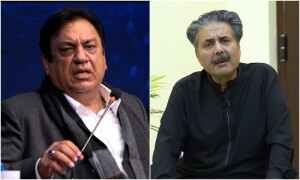Every religion has evolved through two movements, namely revivalist, and progressive. A revivalist movement emerges in a backward and intellectually bankrupt society where political, social and economic problems appear to be unsolvable, and disillusionment and disappointment set in. In these circumstances, the slogan of revivalism is raised by a cleric or a policy maker to regain past glory.
Instead of creating a new system and producing new ideas and thoughts, a revivalist movement attempts to bring back the past model to solve problems of the present time. Revivalists believe that the past model of religious teaching is still relevant and would work miraculously to reform society.
On the other hand, progressive movements emerge in a society which is in a process of development and needs a new interpretation of religion. But such a movement requires intellectual creativity to readjust religion to the changing situation and justify its advancement in various social and cultural aspects. In this way, revivalists and progressives contradict each other.
One adheres to the past as an efficient model whereas the other creates a new system by re-interpreting religion. Religious movements do not convert the majority of society and appeal only to a minor section which consequently becomes a sect that strictly follows its teachings.
Every sect then tries to assert its identity and attempts to preserve it by not integrating with other sects and communities. Each sect views the other with suspicion, condemning the other group’s teachings as irreligious and misleading.
As a result of sectarian interpretation, religion no longer remains a monolithic faith. Divided into different units, it serves the interests of different groups. In fact, this keeps religion alive and workable.
However, each sect is threatened by the majority which condemns the formation of sects and adopts a policy either to reconvert them or crush them. When it becomes difficult to survive among the majority, they retire from the centre and take refuge in the periphery where they can follow their beliefs without interference.
In Muslim societies, the Druz are perhaps the best examples of those who chose to live in the mountainous area to live far away from central authority. In Christianity, the Amish sect living mostly in the United States follows their own teachings based on medieval times and a lifestyle that does not involve modern technology. In the US, the Amish have survived due to democracy and their own geographical location available to them. They enjoy rights as a community to observe their own teachings which does not conflict with the constitution.
In the history of the subcontinent, we have an example of Mandarin movement in the 15th century. Its founder was Sayyed Muhammad Mahdi Haunpiri, who claimed to be the Mahdi in 1490. He wanted to purify religion from pollution and revive its original teachings.
Historians are perplexed about the emergence of this movement at a time when there was no crisis that led to such a radical, reformist movement.
A group of historians argues that it was the product of the political and social circumstances when Muslim states were insatiable and threatened the existence of the surrounding Hindu states. Moreover, as the Sharia became weaker in India the Muslim community was in danger of losing its identity.
A. A. Rizvi extensively worked on this movement, and he believes that during this period there were Sikander Lodhi (1489-1517) in northern India and Sultan Mahmud Shahbegra ( 1458-1511) in Gujarat, who were very powerful rulers and were not threatened by the Hindu states. However, he could not find the real cause of this movement. Perhaps the cause of the movement was more spiritual than political.
Its teachings required that the followers shun all worldly affairs and live a in a daira (circle), where nobody should own any property. All members should share whatever they have with other fellows. It also emphasised on meditation and strict observance of the Sharia. The main motive of the sect was to create a community which would be virtuous and spiritually pure to become a model to other Muslims.
It had no political ambitions. It was difficult for other Muslims to adopt the rules and teachings of this sect and to abandon all worldly affairs, to share their wealth and property with fellows of the same religion and to live in poverty.
This confined the movement to a limited circle of disciples. As the followers were very zealous in matters of religious beliefs, they were hunted down by the orthodox ulema and the rulers. To escape from their wrath, the followers took refuge in Gujarat, Khandesh and Ahmadnagar but survived despite victimisation; the movement still has some following in India and Pakistan.
When we study the history of religious sects we find that the majority regards a breakaway faction as a serious crime and makes attempts to bring it back to the mainstream fold.
This creates intolerance in society. Some sects prefer not to involve in politics and utilise their energies in trade and commerce and become a financial power.
Religious sects are a product of social, political and economic needs of a particular time. Many vanish after fulfilling their mission. This is how old sects disappear and new sects come into being as a demand of changing times.















































Dear visitor, the comments section is undergoing an overhaul and will return soon.